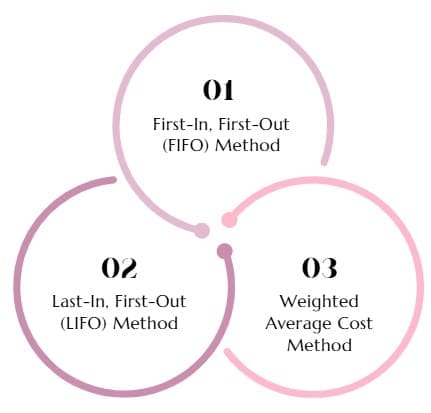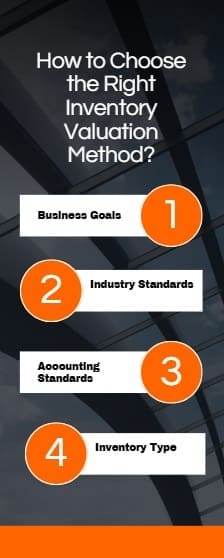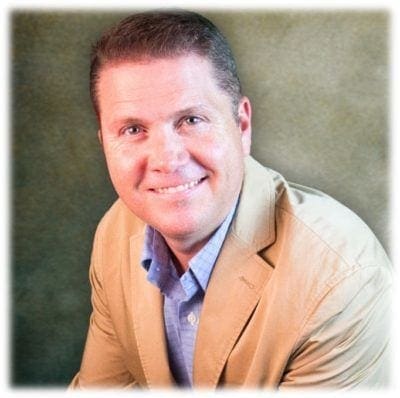Inventory valuation refers to the accounting process of assigning monetary value to the goods a company holds in stock. This process becomes crucial because it determines the cost of goods sold (COGS) and the value of ending inventory on your balance sheet.
The value of inventory fluctuates based on market conditions, supplier pricing, and the specific accounting method you choose. Therefore, selecting the right inventory valuation method can significantly impact your business’s reported profitability and tax liability.
Companies must consistently apply their chosen inventory valuation method to maintain accurate financial records. Additionally, this consistency ensures compliance with accounting standards and provides reliable data for business analysis.
Table of contents
What is Inventory Valuation?
Inventory valuation refers to the process of assigning a monetary value to a company’s unsold inventory at the end of an accounting period. This value is recorded on the balance sheet and affects the cost of goods sold (COGS), gross profit, and net income. Accurate inventory valuation is essential for financial reporting, tax calculations, and assessing business performance.
The value of inventory depends on the method used to calculate it. Common inventory valuation methods include First-In, First-Out (FIFO), Last-In, First-Out (LIFO), and the Weighted Average Cost method. Each method has unique implications for financial outcomes and is chosen based on business needs, industry standards, and economic conditions.
Public, Onsite, Virtual, and Online Six Sigma Certification Training!
- We are accredited by the IASSC.
- Live Public Training at 52 Sites.
- Live Virtual Training.
- Onsite Training (at your organization).
- Interactive Online (self-paced) training,
Why Inventory Valuation Matters?
Inventory valuation directly influences a company’s financial health. Here’s why it’s important:
- Financial Reporting Accuracy: Proper valuation ensures balance sheets reflect the true value of inventory, which is crucial for stakeholders and investors.
- Tax Compliance: The chosen inventory method affects taxable income, as COGS impacts profit calculations.
- Cost Management: Understanding inventory value helps businesses optimize purchasing, pricing, and production strategies.
- Decision-Making: Accurate inventory data supports informed decisions about restocking, pricing, and sales strategies.
Common Inventory Valuation Methods

Businesses can choose from several inventory accounting methods to value their stock. The most widely used are FIFO, LIFO, and the Weighted Average Cost method. Let’s explore each method, including how to calculate inventory value and their practical applications.
First-In, First-Out (FIFO) Method
The FIFO inventory method assumes that the earliest goods purchased or produced are sold first. The cost of the oldest inventory is used to calculate COGS, while the most recent inventory costs determine the value of ending inventory.
How to Calculate FIFO?
To calculate FIFO, follow these steps:
- Track Inventory Purchases: Record the cost and quantity of each inventory batch.
- Determine COGS: Assign the cost of the oldest inventory to goods sold during the period.
- Calculate Ending Inventory: Use the cost of the most recent inventory to value unsold stock.
FIFO Example:
Suppose a retailer purchases 100 units of a product at $10 each in January, 150 units at $12 each in February, and sells 200 units in March. Using FIFO:
- COGS = (100 units × $10) + (100 units × $12) = $1,000 + $1,200 = $2,200
- Ending Inventory = 50 units × $12 = $600
Advantages of FIFO
- Reflects the actual flow of goods in most businesses, especially for perishable items.
- Matches current market prices to ending inventory, providing a realistic balance sheet value.
- Simplifies accounting for businesses with consistent inventory turnover.
Disadvantages of FIFO
- May inflate profits during periods of rising prices, leading to higher taxes.
- Less effective for businesses with irregular inventory flows.
Last-In, First-Out (LIFO) Method
The LIFO method assumes that the most recently purchased or produced goods are sold first. The cost of the newest inventory is used for COGS, while older inventory costs determine the ending inventory value.
How to Calculate LIFO?
- Record Inventory Purchases: Track the cost and quantity of each batch.
- Calculate COGS: Assign the cost of the most recent inventory to goods sold.
- Determine Ending Inventory: Use the cost of older inventory for unsold stock.
LIFO Example:
Using the same retailer example (100 units at $10 in January, 150 units at $12 in February, 200 units sold in March):
- COGS = (150 units × $12) + (50 units × $10) = $1,800 + $500 = $2,300
- Ending Inventory = 50 units × $10 = $500
Advantages of LIFO
- Matches recent, often higher, costs to COGS, reducing taxable income during inflation.
- Useful for businesses in industries with volatile prices, like oil or commodities.
Disadvantages of LIFO
- May undervalue ending inventory, as older costs are used.
- Not permitted under International Financial Reporting Standards (IFRS), limiting its use globally.
Weighted Average Cost Method
The average cost method calculates inventory value by averaging the cost of all inventory items available during the period. This method smooths out price fluctuations, providing a consistent cost per unit.
How to Calculate Weighted Average?
- Sum Total Costs: Add the cost of all inventory purchases.
- Divide by Total Units: Calculate the average cost per unit.
- Apply to COGS and Ending Inventory: Multiply the average cost by the number of units sold or remaining.
Weighted Average Example:
Using the retailer example:
- Total cost = (100 units × $10) + (150 units × $12) = $1,000 + $1,800 = $2,800
- Total units = 100 + 150 = 250
- Average cost per unit = $2,800 ÷ 250 = $11.20
- COGS = 200 units × $11.20 = $2,240
- Ending Inventory = 50 units × $11.20 = $560
Advantages of Weighted Average
- Simplifies accounting by avoiding the need to track individual batches.
- Reduces the impact of price volatility on financial statements.
- Widely accepted under both GAAP and IFRS.
Disadvantages of Weighted Average
- May not reflect the actual flow of goods.
- Less precise for businesses with significant price variations.
Also Read: What is Process Indicator?
FIFO vs. LIFO vs. Weighted Average: Which is Best?
Choosing between FIFO, LIFO, and the weighted average method depends on several factors:
- Industry Type: FIFO suits businesses with perishable goods, like food retailers, while LIFO benefits industries with rising costs, like fuel. Weighted average is ideal for stable industries.
- Economic Conditions: In inflationary environments, LIFO may reduce taxable income, while FIFO reflects higher profits. Weighted average balances these effects.
- Regulatory Requirements: LIFO is not allowed under IFRS, making FIFO or weighted average better for global businesses.
- Inventory Turnover: High-turnover businesses may prefer FIFO for simplicity, while low-turnover businesses may opt for weighted average to smooth costs.
How to Choose the Right Inventory Valuation Method?

Selecting an inventory valuation method requires careful consideration. Here are key factors to evaluate:
- Business Goals: If minimizing taxes is a priority, LIFO may be suitable during inflation. For accurate financial reporting, FIFO or weighted average may be better.
- Industry Standards: Align with competitors or industry norms to ensure comparability.
- Accounting Standards: Ensure compliance with GAAP or IFRS, depending on your region.
- Inventory Type: Consider whether your inventory is perishable, stable, or subject to price fluctuations.
Consulting with an accountant can help tailor the method to your business’s unique needs.
How to Value Inventory?

Step 1: Identify Your Inventory Types
First, categorize your inventory into raw materials, work-in-progress, and finished goods. Each category may require different valuation approaches based on their stage in the production process.
Step 2: Choose Your Valuation Method
Select the most appropriate method based on your industry, business goals, and regulatory requirements. Remember, consistency in application is crucial for accurate financial reporting.
Step 3: Gather Purchase Data
Collect detailed records of all inventory purchases, including dates, quantities, and unit costs. Accurate data forms the foundation of reliable inventory valuation.
Step 4: Calculate Inventory Value
Apply your chosen method to calculate both cost of goods sold and ending inventory values. Use inventory management software when possible to ensure accuracy and efficiency.
Step 5: Document and Review
Maintain thorough documentation of your calculations and review results for reasonableness. Regular inventory counts help verify the accuracy of your valuation methods.
Inventory Valuation Report and Analysis
An effective inventory valuation report provides insights into your business’s inventory performance. This report should include current inventory levels, turnover rates, and trend analysis over multiple periods.
Moreover, the inventory valuation summary helps identify slow-moving items, optimize purchasing decisions, and improve cash flow management. Regular analysis ensures your inventory investment aligns with business objectives.
Best Practices for Inventory Valuation
To ensure accurate and efficient inventory valuation, follow these best practices:
- Maintain Detailed Records: Track purchase dates, costs, and quantities to support FIFO, LIFO, or weighted average calculations.
- Use Inventory Management Software: Tools like QuickBooks or NetSuite automate valuation and reduce errors.
- Conduct Regular Inventory Counts: Periodic physical counts verify records and prevent discrepancies.
- Review Economic Trends: Adjust your method based on inflation or deflation to optimize financial outcomes.
- Stay Compliant: Ensure your chosen method aligns with accounting standards and tax regulations.
Also Read: 8 Pillars of Total Productive Maintenance
Frequently Asked Questions (FAQs) on Inventory Valuation
What is inventory valuation?
Inventory valuation is the process of assigning a monetary value to a company’s unsold inventory at the end of an accounting period, impacting financial statements and tax calculations.
What are the main inventory valuation methods?
The primary methods are FIFO (First-In, First-Out), LIFO (Last-In, First-Out), and the Weighted Average Cost method, each with unique implications for COGS and ending inventory.
What is FIFO in accounting?
FIFO assumes the earliest goods purchased are sold first, using older costs for COGS and recent costs for ending inventory.
What is LIFO in accounting?
LIFO assumes the most recently purchased goods are sold first, using newer costs for COGS and older costs for ending inventory.
Which method is best for my business?
The best method depends on your industry, economic conditions, and accounting standards. FIFO suits perishable goods, LIFO benefits high-inflation industries, and weighted average smooths cost fluctuations.
How do I calculate inventory value?
Calculate inventory value using FIFO, LIFO, or weighted average. Track purchase costs, determine COGS based on the chosen method, and assign remaining costs to ending inventory.
Can I switch inventory valuation methods?
Yes, but switching methods requires careful planning and may need approval from tax authorities. Consult an accountant to ensure compliance and minimize disruptions.
Final Words
Most businesses value inventory monthly for internal reporting and at least annually for external financial statements. Companies with rapid inventory turnover or volatile pricing may benefit from more frequent valuations to maintain accuracy and support decision-making.



















